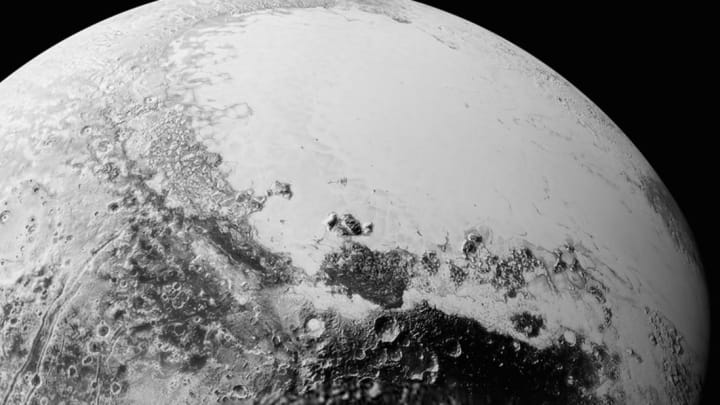Latest Images from Pluto: 'It's Complicated,' Says NASA

The New Horizons probe has sent back the latest images from its historic July 14 flyby of Pluto. While the first close-up photos of the dwarf planet, taken from 7800 miles above the surface, had the New Horizons team—and people around the world—giddy with excitement about intriguing features like 11,000-foot-tall ice mountains, the latest, downlinked over Labor Day weekend, have left them scratching their heads.
"If an artist had painted this Pluto before our flyby, I probably would have called it over the top—but that’s what is actually there," said New Horizons principal investigator Alan Stern, of the Southwest Research Institute (SwRI), in a press statement.
The latest high-res images reveal a bevy of diverse features on Pluto's surface, including possible dunes, nitrogen ice flows oozing from mountains, networks of valleys perhaps carved by material flowing over Pluto’s surface, and "chaotically jumbled mountains reminiscent of disrupted terrains on Jupiter’s icy moon Europa," according to the statement.
The high-res mosaic image above, taken from 50,000 miles above the surface, shows Sputnik Planum—the smooth, bright plain in the center—surrounded by a wild diversity of landscapes, including those chaotically jumbled mountains.
The below image, a 220-mile-wide swath of the same region also photographed from 50,000 miles up, shows deeper detail of the planet's geological landforms, including dark, ancient heavily cratered terrain; bright, smooth geologically young terrain; assembled masses of mountains; and an enigmatic field of dark, aligned ridges that resemble dunes whose "origin is under debate," the press statement notes. The smallest visible features are just a half-mile in size.
New Horizons will continue to send data back to Earth for the next year. So expect the awesome—and the mysteries—to keep on coming.
All images courtesy of NASA/Johns Hopkins University Applied Physics Laboratory/Southwest Research Institute